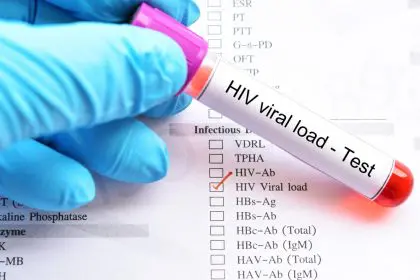Though often dismissed as a common occurrence, a nosebleed can be more than just a minor inconvenience. Our bodies often communicate through subtle signs, and a nosebleed might be one such signal, hinting at underlying health issues. While nosebleeds are generally harmless and attributed to dry air or nose-picking, they can occasionally be a red flag for more significant health concerns. Let’s explore five potential meanings behind a nosebleed, urging us to pay closer attention to our bodies.
1. Environmental factors: Dry air and nasal irritation
The most common and benign reason for a nosebleed is environmental factors. Dry air, prevalent in cold climates or heated indoor spaces, can dry the delicate blood vessels inside the nose, leading to bleeding. Similarly, excessive use of nasal decongestant sprays or irritation from dust and pollutants can contribute to this issue. If your nosebleeds are sporadic and coincide with environmental changes, it’s likely nothing to worry about. However, if they persist, it’s advisable to consult a healthcare professional to rule out any underlying concerns.
2. Trauma and nose picking: More than just a superficial problem
Frequent nose picking or accidental trauma to the nasal passages can also be a culprit behind recurring nosebleeds. The nose houses a network of fragile blood vessels, and even minor injuries can result in bleeding. While this cause is often less alarming than others, addressing the issue’s root is crucial. Chronic nose picking, for example, maybe a manifestation of stress or anxiety, warranting attention beyond merely treating the symptoms. If you find yourself experiencing frequent nosebleeds due to trauma or picking, it might be time to explore healthier coping mechanisms and stress management strategies.
3. Blood clotting disorders: Unveiling underlying health conditions
Nosebleeds that seem to occur spontaneously or are challenging to control may indicate an underlying blood clotting disorder. Conditions such as hemophilia or von Willebrand disease can compromise the blood’s ability to clot properly, resulting in prolonged bleeding. If you notice that your nosebleeds are accompanied by easy bruising, prolonged bleeding from minor cuts, or other unusual symptoms, you must seek medical attention promptly. Diagnosing and managing blood clotting disorders early on can prevent more severe complications.
4. Hypertension: The silent culprit
Surprisingly, high blood pressure, or hypertension, can manifest through nosebleeds in some cases. While hypertension typically doesn’t exhibit noticeable symptoms, its impact on the cardiovascular system can sometimes lead to weakened blood vessels in the nose, making them more prone to bleeding. If you’re experiencing recurrent nosebleeds and have a family history of hypertension or other cardiovascular issues, it’s wise to monitor your blood pressure regularly. Lifestyle modifications, including a balanced diet, regular exercise, and stress management, can significantly contribute to controlling hypertension and reducing the likelihood of associated nosebleeds.
5. Medication side effects: Unintended consequences
Certain medications, particularly those that affect blood clotting or have a drying effect on mucous membranes, can contribute to nosebleeds. Anticoagulants, nonsteroidal anti-inflammatory drugs (NSAIDs), and nasal corticosteroid sprays are examples of medications that may pose this side effect. If you’ve recently started a new medication regimen and noticed an increase in nosebleeds, it’s crucial to inform your healthcare provider. Adjusting the dosage or exploring alternative medications may help alleviate this issue while ensuring you receive the necessary treatment for your underlying condition.
How to stop a nosebleed?
Most nosebleeds can be stopped at home with the following steps:
- Sit down and lean forward slightly. This will help to reduce blood pressure in the head.
- Pinch the soft part of your nose just below the bridge of your nose.
- Hold the pinch for 10 minutes. If the bleeding has not stopped after 10 minutes, pinch your nose for another 10 minutes.
- Apply a cold compress to the bridge of your nose. This will help to constrict the blood vessels and stop the bleeding.
- Avoid blowing your nose for 24 hours after the nosebleed has stopped.
If the nosebleed is severe or does not stop after 20 minutes of pinching, you should see a doctor.
While a nosebleed might seem like a minor inconvenience, it can be a valuable indicator of our overall health. From environmental factors to underlying medical conditions, the reasons behind nosebleeds vary. Understanding the potential meanings behind this occurrence empowers us to take charge of our health and seek timely medical attention. If you are grappling with persistent or severe nosebleeds, consult a healthcare professional to uncover the underlying cause and embark on a path toward comprehensive well-being. Your body’s signals should never be ignored, and decoding them can lead to a healthier, more informed life.
This story was created using AI technology.












